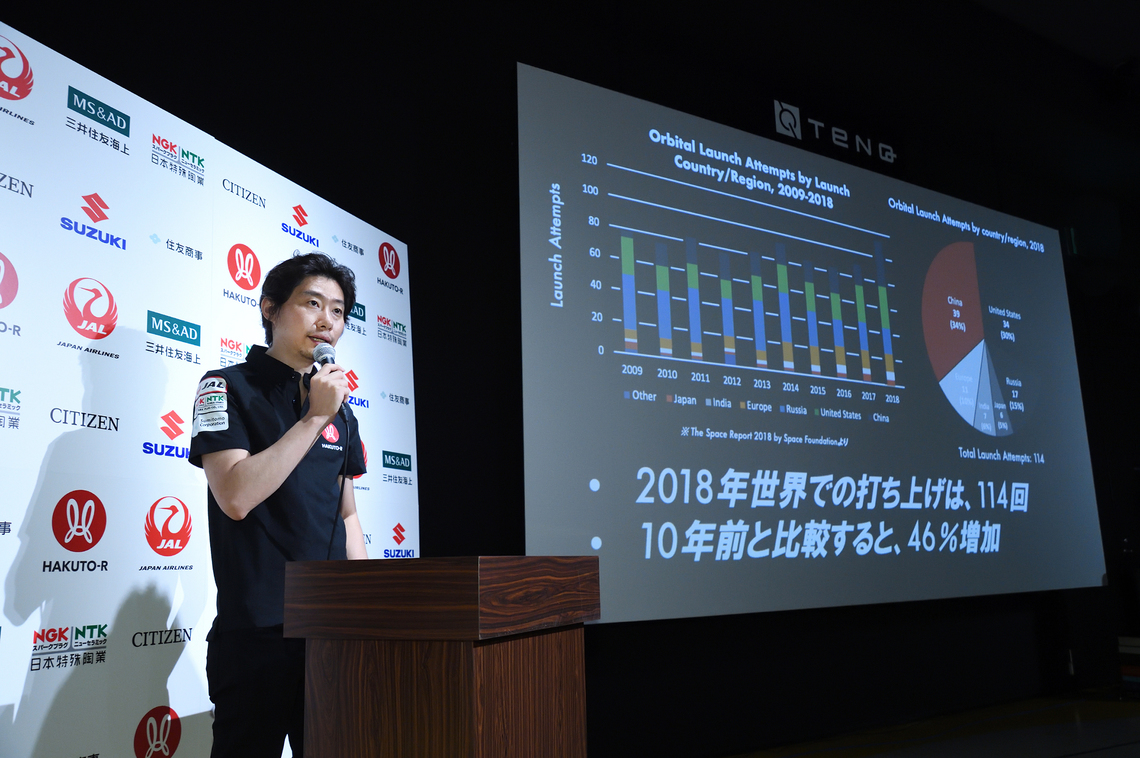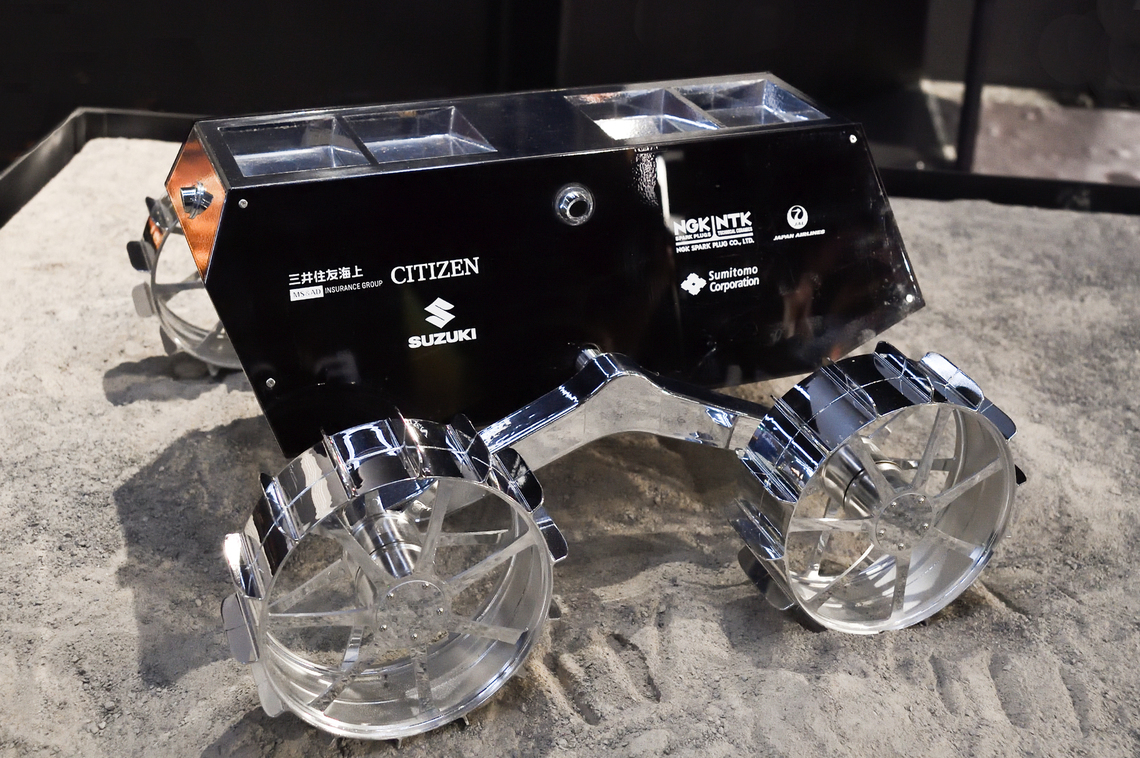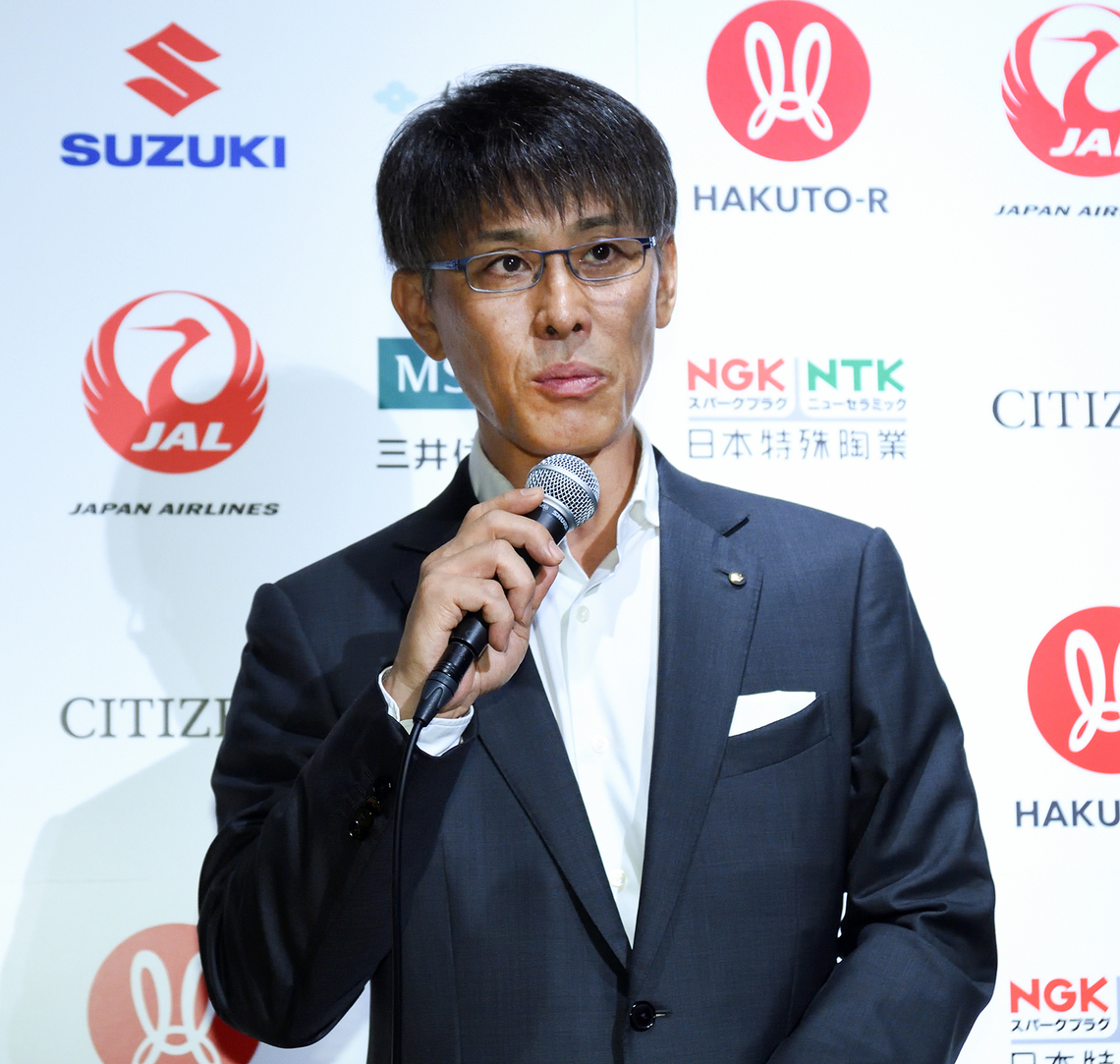Note: This website was automatically translated, so some terms or nuances may not be completely accurate.
Lunar Exploration Program "HAKUTO-R" Announces Three New Partner Companies
ispace, the company advancing the world's first private lunar exploration program "HAKUTO-R," held a briefing on the program's progress and announced new partner companies at the TeNQ Space Museum in Bunkyo Ward, Tokyo, on August 22.
The venue is currently hosting the "HAKUTO-R Summer Special Exhibition" (until September 1), featuring life-size displays of the lander and rover (lunar exploration robot), among other moon exploration-related exhibits.

At the outset, CEO Takeshi Hakamada explained changes to the program.
Launched in September 2018, the program announced that Mission 1—originally planned to place a lander into lunar orbit in 2020—would now aim for a "2021 lunar landing." Mission 2, targeting lunar rover operation in 2021, would now pursue a "2023 lunar landing & exploration."
The company cited changes in the business environment and its participation in NASA's Commercial Lunar Payload Services (CLPS) program to develop lunar transport providers as reasons for the change.
While NASA strongly desires an early lunar landing, developing both the HAKUTO-R lander and a lander compatible with CLPS simultaneously was considered high-risk. Therefore, to focus on the lunar landing lander, the company decided to change the originally planned HAKUTO-R mission and aim for a lunar landing from the very first attempt.
Representative Hakamada stated, "We want to move forward toward a lunar landing, solving challenges with the help of partner companies and others."


Attending the meeting were Tomohiro Nishihata, Managing Executive Officer of Japan Airlines (which signed a partnership agreement in February); Isao Noshiki, Managing Executive Officer of Mitsui Sumitomo Insurance; and Takao Kojima, Director of NGK Insulators.
Each discussed the current status of their collaborative efforts: technical support for equipment assembly, maintenance, and transportation; product development for lunar insurance; and the development and technical demonstration of all-solid-state batteries.
(Previous article: https://dentsu-ho.com/articles/6503 )
Next, the new corporate partners were introduced: Mr. Norio Takeuchi, Managing Director of Citizen Watch; Mr. Masahiro Ikuma, Managing Officer of Suzuki; and Mr. Eiji Ishida, Executive Officer of Sumitomo Corporation. Each shared their aspirations.



Citizen Watch provided its proprietary material "Super Titanium" for the watch case exterior, contributing to the manufacturing of parts for the Lander Rover. Mr. Takeuchi stated, "It's been about 50 years since we started using titanium in watches. We want to support the program's success with our materials." Suzuki provided technical cooperation for structural components like the Lander's body and landing legs, utilizing its structural analysis technology developed for automobile development. Mr. Ikuma remarked, "Space is uncharted territory, but we're thrilled to be participating." Sumitomo Corporation leverages its track record in government-led international space development projects to pursue the commercialization of private space utilization. Mr. Ishida stated, "We aim to create value with diverse members by utilizing resources like our in-house open innovation lab 'MIRAI LAB PALETTE'."
Additionally, it was announced that Shogakukan signed a media partnership agreement that day. The company will communicate the program's progress through publications and events, supporting HAKUTO-R's challenge.
This brings the total to six corporate partners and three media partners.

HAKUTO-R Official Website: https://ispace-inc.com/jpn/hakuto-r/
Was this article helpful?